Did you know that blue vegetables exist? Yes, you read that right! While most vegetables are commonly associated with colors like green, red, or yellow, there is a unique and relatively lesser-known group of plants that exhibit shades of blue, violet, or purple. These blue-colored vegetables, also known as azure vegetables or blue hued vegetables, stand out with their distinct pigmentation and offer a range of health benefits.
Key Takeaways:
- Blue vegetables are a unique and relatively lesser-known group of plants that exhibit shades of blue, violet, or purple.
- They are low in calories, high in fiber, and offer a wide range of health benefits.
- Blue vegetables contain high levels of antioxidants and phytochemicals, which contribute to heart health and have anti-inflammatory properties.
- Adding blue vegetables to your diet can introduce new flavors and vibrant colors to your meals.
- You can find blue vegetables at local farmers’ markets and specialty grocery stores.
The Best Blue Vegetables to Incorporate into Your Diet
When it comes to incorporating more color into our diets, blue vegetables are often overlooked. These unique and vibrant veggies not only add a visually appealing element to our meals but also bring a range of health benefits to the table. If you’re looking to explore the world of blue vegetables, here are some of the best options to consider:
- Blue Potatoes: These indigo gems are packed with nutrients like vitamin C, potassium, and antioxidants. Enjoy them roasted, mashed, or in a colorful potato salad.
- Blue Corn: This cobalt-colored vegetable is not only visually striking but also rich in fiber and antioxidants. Use blue cornmeal to make tortillas, chips, or even pancakes.
- Purple Cauliflower: This blue hued vegetable is a great source of vitamin C and antioxidants. Try roasting or steaming it for a mesmerizing side dish.
- Blue-green Algae: While technically not a vegetable, blue-green algae like spirulina offer a concentrated dose of nutrients and are often used in smoothies or incorporated into energy bars.
These are just a few examples of the many blue vegetables that can add a pop of color and nutrition to your meals. Feel free to explore the blue veggie aisle at your local grocery store or get creative with recipes that feature these nutrient-rich blue hued vegetables.
Other Blue Fruits with Health Benefits
In addition to blue vegetables, there are also several blue fruits that offer powerful health benefits. These include:
- Blueberries: Packed with antioxidants and vitamins, blueberries are known for their brain-boosting properties and role in reducing oxidative stress.
- Blackberries: Rich in fiber and vitamin C, blackberries can support digestion, boost immune function, and promote healthy skin.
- Elderberries: With their immune-boosting properties, elderberries are often used to relieve cold and flu symptoms.
- Concord Grapes: Known for their deep, dark hue, Concord grapes contain resveratrol, a powerful antioxidant that supports heart health.
- Black Currants: These small berries are rich in vitamin C, iron, and anthocyanins, which have been linked to improved eye health and reduced inflammation.
- Damson Plums: Damson plums are a tart and flavorful fruit packed with fiber, vitamins, and minerals.
These blue fruits not only add a burst of color to your meals but also provide essential nutrients that can support overall health and well-being. Incorporating blue fruits into your diet is a delicious way to enhance your antioxidant intake and enjoy a wide range of health benefits.
Experimenting with different recipes and incorporating these blue fruits into smoothies, salads, and desserts can add both flavor and nutrition to your meals. Remember to choose fresh, ripe fruits and store them properly to maintain their quality and taste.
The Unique Properties and Health Benefits of Blue Vegetables
Blue vegetables are not only visually striking but also possess unique properties that set them apart from other colorful veggies. Incorporating blue vegetables into your diet can provide a host of health benefits, making them a valuable addition to your meals.
- Rich in Antioxidants: Blue vegetables are packed with antioxidants, which help protect your body against free radicals and oxidative stress. These antioxidants, such as anthocyanins, provide anti-inflammatory and anti-cancer properties, promoting overall wellness.
- Support Heart Health: Some blue vegetables, like blueberries and purple cabbage, contain compounds that support heart health. These compounds have been linked to reducing cholesterol levels and improving cardiovascular function, reducing the risk of heart disease.
- Boost Brain Function: The unique pigments in blue vegetables have been associated with improved cognitive function and brain health. Regular consumption of blue veggies, such as purple kale or purple sweet potatoes, may contribute to better memory and overall brain function.
- Enhance Digestive Health: Blue vegetables are high in fiber, aiding in healthy digestion and preventing constipation. The fiber content also promotes a feeling of fullness, which can support weight management and prevent overeating.
“Incorporating blue vegetables into your meals can give you an abundance of nutrients and unique flavors.”
When it comes to blue vegetables, there is a wide array of options to choose from. Explore the vibrant world of blue vegetables, experiment with recipes, and reap the many health benefits they offer. Enhance your meals with the striking colors and flavors of blue veggies, and enjoy the journey to a healthier and more vibrant lifestyle.
Comparison of Health Benefits in Different Blue Vegetables
| Blue Vegetable | Antioxidant Content | Heart Health Benefits | Brain Function Support | Digestive Health Benefits |
|---|---|---|---|---|
| Blueberries | High | ✓ | ✓ | ✓ |
| Purple Cabbage | Moderate | ✓ | ✓ | ✓ |
| Purple Kale | Moderate | ✓ | ✓ | ✓ |
| Purple Sweet Potatoes | Moderate | ✓ | ✓ | ✓ |
Tips for Cooking with Blue Vegetables
Incorporating blue vegetables into your meals can be an exciting way to explore new flavors and add vibrancy to your dishes. Whether you’re an experienced chef or a home cook looking to experiment with blue vegetables, here are some handy tips to help you make the most of these colorful and nutritious ingredients:
- Pair blue vegetables with complementary flavors: Blue vegetables have unique flavors that can be enhanced by pairing them with ingredients that complement their taste. For example, the earthy flavor of blue potatoes can be complemented by fresh herbs like rosemary or thyme.
- Preserve the vibrant color: Blue vegetables can lose their color when overcooked. To maintain their vibrant hue, try steaming or sautéing them for a short period of time rather than boiling or simmering for too long.
- Add variety to your salads: Blue vegetables can be a great addition to salads, adding both color and texture. Try adding sliced blue tomatoes or purple cabbage to your salads for an eye-catching and nutritious twist.
- Experiment with different cooking methods: Blue vegetables can be enjoyed in various ways. Roasting, grilling, or even pickling blue vegetables can bring out their unique flavors and add depth to your dishes.
- Balance the flavors: Some blue vegetables may have a more bitter or intense flavor. Balancing their taste with other ingredients like sweet fruits, creamy dressings, or tangy vinaigrettes can create a harmonious blend of flavors.
Remember, cooking with blue vegetables allows you to get creative and explore new culinary horizons. Don’t be afraid to think outside the box and try unusual combinations or techniques. Blue vegetables have a distinctive appearance and flavor profile that can add excitement to your kitchen adventures. Get playful and let the blue hues inspire you!
Now that you know some useful tips for cooking with blue vegetables, it’s time to put your newfound knowledge into action. In the next section, we’ll explore how to select and store blue vegetables to ensure freshness and maximize their nutritional benefits.
How to Select and Store Blue Vegetables
When it comes to blue vegetables, selecting the right ones is key to ensuring freshness and optimal flavor. Here are some tips to help you choose and store blue vegetables:
- Look for vibrant color: Opt for blue vegetables that have a rich and vibrant hue. This indicates that they are fresh and packed with nutrients.
- Check for firmness: Gently squeeze the blue vegetables to ensure they are firm and free from soft spots or bruises. This indicates that they are at peak freshness.
- Inspect the leaves: If the blue vegetable has leaves, such as kale or cabbage, make sure they are crisp and free from yellowing or wilting. Fresh leaves signify quality produce.
- Consider the smell: Give the blue vegetables a quick sniff. They should have a fresh and earthy scent. Avoid any vegetables with an unpleasant or sour odor.
- Store properly: To keep your blue vegetables fresh, store them in a perforated plastic bag or airtight container in the refrigerator. This helps maintain their freshness while allowing for proper airflow.
- Handle with care: Handle blue vegetables gently to prevent bruising or damage. Excessive handling can accelerate spoilage.
By following these tips, you can ensure that your blue vegetables stay fresh and delicious for longer. Now that you know how to select and store them, let’s explore some creative ways to incorporate blue vegetables into your meals.
Expert Tip:
“To preserve the freshness of blue vegetables, it’s best to consume them within a few days of purchase. If you have leftovers, consider blanching and freezing them for later use. This helps retain their vibrant color and nutritional value.” – Chef Emma Johnson
Where to Find Blue Vegetables
If you’re excited to try out some blue vegetables in your cooking, you may be wondering where you can find them. Thankfully, there are a few places where you can buy these unique and vibrant veggies.
One option is to visit your local farmers’ markets. Farmers’ markets are great places to find fresh produce, and you’ll likely come across a variety of blue vegetables while supporting local farmers. Talk to the farmers and vendors at the market, and they may be able to guide you towards specific blue vegetables and provide you with valuable tips and information.
Another option is to explore specialty grocery stores in your area. These stores often have a diverse selection of produce, including rare and specialty items like blue vegetables. Look for stores that emphasize organic and local products, as they are more likely to carry a wide range of unique fruits and vegetables.
Online Specialty Retailers
If you’re unable to find blue vegetables at your local farmers’ markets or specialty grocery stores, another option is to explore online specialty vegetable retailers. These online stores often have a wide selection of unique and hard-to-find produce, including blue vegetables. You can browse through their websites, place an order, and have the blue vegetables delivered straight to your door.
Community Supported Agriculture (CSA) Programs
Community Supported Agriculture (CSA) programs are another excellent option to consider when looking for blue vegetables. CSA programs allow you to support local farmers by purchasing a share of their harvest. In return, you’ll receive a weekly or bi-weekly share of fresh produce, which can include blue vegetables depending on the season and availability.
So whether you visit your local farmers’ markets, explore specialty grocery stores, shop online, or participate in a CSA program, there are plenty of options available to help you find and enjoy the vibrant and nutritious blue vegetables.
| Place | Description |
|---|---|
| Local Farmers’ Markets | Farms and vendors offer fresh, locally grown produce, including blue vegetables |
| Specialty Grocery Stores | Stores that offer a wide range of unique and rare produce, often including blue vegetables |
| Online Specialty Retailers | Online stores with a diverse selection of hard-to-find produce, including blue vegetables |
| Community Supported Agriculture (CSA) Programs | Support local farmers by purchasing a share of their harvest and receive fresh produce, potentially including blue vegetables |
Additional Blue Fruits and Vegetables Worth Exploring
In addition to the blue vegetables mentioned earlier, there are other blue-colored fruits and vegetables worth exploring. Some of these lesser-known blue varieties include:
| Fruit/Vegetable | Description |
|---|---|
| Blueberries | Small berries packed with antioxidants and vitamins. |
| Blackberries | Delicious, juicy berries with a deep blue hue. |
| Elderberries | Tangy berries often used in jams and syrups. |
| Concord Grapes | Richly flavored grapes perfect for snacking or making wine. |
| Black Currants | Tart berries commonly used in juice or dessert recipes. |
| Damson Plums | Small, sweet plums that are prized for their intense flavor. |
These blue fruits and vegetables offer a range of flavors and nutritional benefits. Incorporating them into your diet can add variety and vibrant colors to your meals.
“Blueberries are one of my favorite blue fruits. They are not only delicious but also packed with antioxidants that promote brain health. I love adding them to my morning smoothies or enjoying them as a simple snack!”
Blue Vegetables in a Nutshell
Blue vegetables are a unique and exciting addition to any diet. Their striking blue hues not only add a visually appealing touch to your meals but also offer a range of nutritional benefits. Incorporating blue vegetables into your diet can elevate your nutrient intake and provide a burst of color and flavor to your dishes.
The Nutritional Benefits of Blue Vegetables
Blue vegetables are packed with essential nutrients, making them an excellent choice for promoting overall health and vitality. Here are some key nutritional benefits of including blue vegetables in your diet:
- High in antioxidants: Blue vegetables contain a variety of antioxidants, including anthocyanins, which are responsible for their vibrant blue hues. These antioxidants provide protection against oxidative stress and help reduce the risk of chronic diseases such as heart disease and certain types of cancer.
- Rich in vitamins and minerals: Blue vegetables are a good source of essential vitamins and minerals, including vitamin C, vitamin K, potassium, and folate. These nutrients play a crucial role in supporting immune function, bone health, and energy metabolism.
- High in fiber: Blue vegetables are an excellent source of dietary fiber, which aids in digestion, promotes healthy bowel movements, and helps regulate blood sugar levels.
Incorporating blue vegetables into your diet can help you meet your nutritional needs while adding a vibrant touch to your plate.
Cooking Tips for Blue Vegetables
Blue vegetables can be prepared and enjoyed in various ways. Here are some cooking tips to help you make the most of these vibrant and nutritious ingredients:
- Roasting: Try roasting blue vegetables like blue potatoes or blue carrots to bring out their natural sweetness and enhance their flavors. Drizzle them with olive oil, sprinkle with your favorite herbs and spices, and roast them until they are tender and golden brown.
- Adding to salads: Blue vegetables can be a colorful addition to salads. Slice blue radishes or blue endive and toss them with mixed greens, cherry tomatoes, and your favorite dressing for a refreshing and nutrient-packed salad.
- Blending into smoothies: Incorporate blue vegetables like blue kale or blue spinach into your morning smoothies for an extra nutrient boost. Their vibrant colors can add an appealing hue to your smoothies, making them visually enticing.
- Steaming: Steaming blue vegetables helps retain their vibrant colors and preserves their nutritional content. Steam blue broccoli or blue cauliflower until they are tender yet still crisp, and serve them as a nutritious side dish.
Get creative in the kitchen and experiment with different cooking methods to discover your favorite ways to enjoy blue vegetables.
Where to Find Blue Vegetables
Blue vegetables can be found at various locations, including local farmers’ markets and specialty grocery stores. When shopping for blue vegetables, look for fresh and vibrant ones that are free from blemishes or signs of wilting. These establishments often carry a wide range of blue vegetables, allowing you to explore different varieties and experiment with new flavors and textures.
Next time you visit your local farmers’ market or specialty grocery store, keep an eye out for blue vegetables to add a unique touch to your meals.
| Where to Find Blue Vegetables | Address | Contact |
|---|---|---|
| Local Farmers’ Market | 123 Main Street | (555) 123-4567 |
| Specialty Grocery Store | 456 Elm Avenue | (555) 987-6543 |
Note: Availability of blue vegetables may vary depending on the season and location.
In summary, blue vegetables offer not only beautiful and vibrant colors but also a host of nutritional benefits. Incorporate them into your diet and explore various cooking methods to enjoy their unique flavors. Whether you roast, steam, or blend them, blue vegetables can elevate your meals and provide a range of essential nutrients. Look for blue vegetables at local farmers’ markets and specialty grocery stores to add a touch of blue to your plate and indulge in their delicious and nutritious goodness.
Recipes Featuring Blue Vegetables
Looking to add some vibrant blue vegetables to your meals? Try these delicious and creative recipes that showcase the unique flavors and colors of blue vegetables.
Blue Vegetable Salad
Elevate your salad game with this refreshing blue vegetable salad. The combination of crisp blue lettuce, blue potatoes, and blue corn will add a pop of color to your plate. Toss in some cherry tomatoes, sliced cucumbers, and a tangy vinaigrette for a burst of flavor. This salad is not only visually stunning but also packed with nutritional benefits.
Roasted Blue Vegetables
Roasting blue vegetables brings out their natural sweetness and enhances their rich flavors. Try roasting a medley of blue carrots, blue turnips, and purple cauliflower. Drizzle them with olive oil, sprinkle some fresh herbs, and roast them until tender and slightly caramelized. This roasted blue vegetable dish makes a perfect side or a colorful addition to any roasted meat or grain bowl.
Blue Vegetable Stir-Fry
For a quick and flavorful meal, whip up a blue vegetable stir-fry. Sauté blue bok choy, blue kale, and blue string beans with garlic, ginger, and soy sauce. Add some protein like tofu, chicken, or shrimp for a complete and satisfying meal. The vibrant hues of the blue vegetables will make this stir-fry a feast for both the eyes and the taste buds.
These recipes are just the beginning of your culinary exploration with blue vegetables. Don’t be afraid to experiment with different combinations and cooking techniques to create your own mouthwatering dishes. Let the stunning colors and nutritional benefits of blue vegetables inspire you in the kitchen!
Try Blue Vegetables for a Colorful and Nutritious Diet
Incorporating blue vegetables into your diet can add a burst of color and a range of nutritional benefits. By including these unique and vibrant vegetables in your meals, you can create a visually appealing and nutritious diet. The antioxidants, fiber, and essential nutrients found in blue vegetables contribute to overall health and well-being. So, the next time you go grocery shopping, remember to look for blue vegetables and explore new ways to enjoy their flavors and benefits.
Benefits of a Colorful Diet
A colorful diet is not just visually pleasing, but it also provides a wide variety of essential nutrients. Each color of fruits and vegetables is associated with different types of phytochemicals, antioxidants, and vitamins, which offer unique health benefits. By including blue vegetables in your diet, you can further diversify your intake of these beneficial compounds.
Nutritional Benefits of Blue Vegetables
Blue vegetables are packed with significant nutritional benefits. They are low in calories but high in fiber, making them a great addition to any diet. The vibrant blue color of these vegetables is often attributed to anthocyanins, which are powerful antioxidants that can help protect against chronic diseases, such as heart disease and cancer.
“Incorporating blue vegetables into your meals is an excellent way to add flavor, visual appeal, and a variety of essential nutrients to your diet.”
Blue vegetables, such as blue potatoes, blue corn, and blueberries, are also rich in vitamins and minerals like vitamin C, vitamin K, and potassium. These nutrients are essential for maintaining a healthy immune system, strong bones, and overall well-being.
Exploring the Variety of Blue Vegetables
There is a wide variety of blue vegetables to choose from, each with its own unique flavor and texture. Here are some popular blue vegetables that you can incorporate into your diet:
| Blue Vegetable | Taste | Best Uses |
|---|---|---|
| Blue Potatoes | Mild and earthy | Roasting, mashing, or adding to salads |
| Blue Corn | Distinctive sweet and nutty flavor | Grinding into flour for tortillas or using as cornmeal |
| Blue Kale | Mild and slightly peppery | Sautéing, steaming, or adding to smoothies |
| Blueberries | Sweet and tangy | Eating raw, adding to smoothies or yogurt, or using in baked goods |
By incorporating these blue vegetables into your meals, you can enjoy their unique flavors while reaping the numerous health benefits they offer.
Try adding roasted blue potatoes to your next dinner or incorporating blue corn tortillas into your taco night. Experiment with different ways to incorporate blue vegetables into your meals and enjoy the nutritional benefits and vibrant colors they bring.
- Make a colorful salad with blue kale, mixed greens, and other colorful vegetables.
- Add blueberries to your morning oatmeal or yogurt for a nutritious and vibrant breakfast.
- Toss roasted blue potatoes with olive oil, garlic, and herbs for a flavorful side dish.
- Blend blue cornmeal into your pancake or waffle batter for a unique twist.
Remember, variety is crucial in maintaining a healthy and balanced diet. By including a range of colorful fruits and vegetables, such as blue vegetables, you can ensure you’re getting a rich array of essential nutrients to support your overall well-being.
Conclusion
Incorporating blue vegetables and fruits into your diet can be a game-changer for your health. These vibrant and nutrient-rich foods, such as blueberries, blackberries, blue tomatoes, and blue cabbage, offer a range of benefits that can support your overall well-being. From their rich antioxidant content to their essential vitamins, minerals, and fiber, blue vegetables and fruits are a valuable addition to any meal.
Not only do blue vegetables and fruits provide a burst of color and unique flavors, but they also offer impressive health benefits. By including them in your meals, you can support heart health, boost immune function, and promote digestive health. Plus, their fiber content can aid in maintaining a healthy weight and keeping your digestive system in check.
Exploring the wonders of blue vegetables and fruits is an exciting journey that can bring variety and excitement to your daily meals. Whether you’re adding blueberries to your morning smoothie, roasting blue vegetables for a nutritious side dish, or incorporating blue fruits into your salads, there are countless ways to enjoy their delicious flavors and reap their health benefits.
So, go ahead and experiment with blue vegetables and fruits in your kitchen. Discover new recipes, try different cooking methods, and savor the vibrant colors and delightful tastes they bring. Your taste buds and your body will thank you for incorporating these blue-hued powerhouses into your diet!

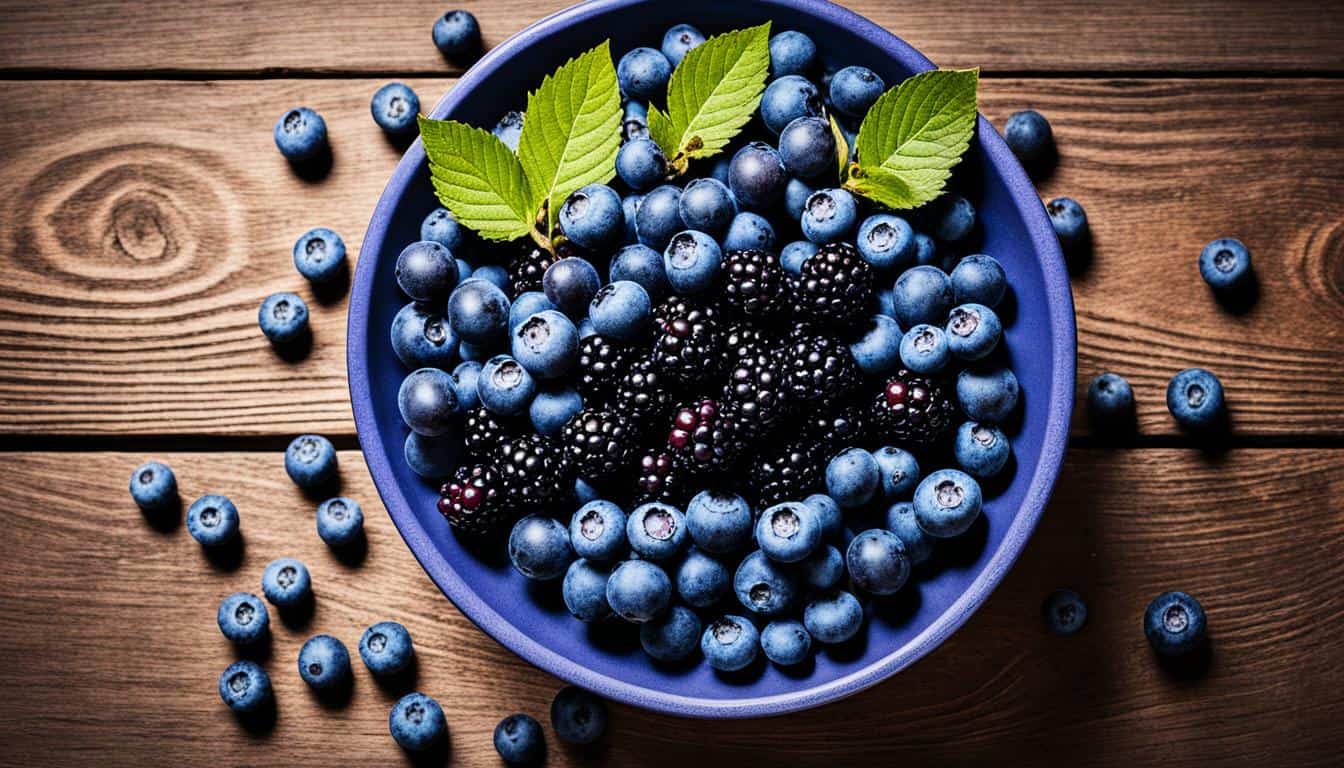
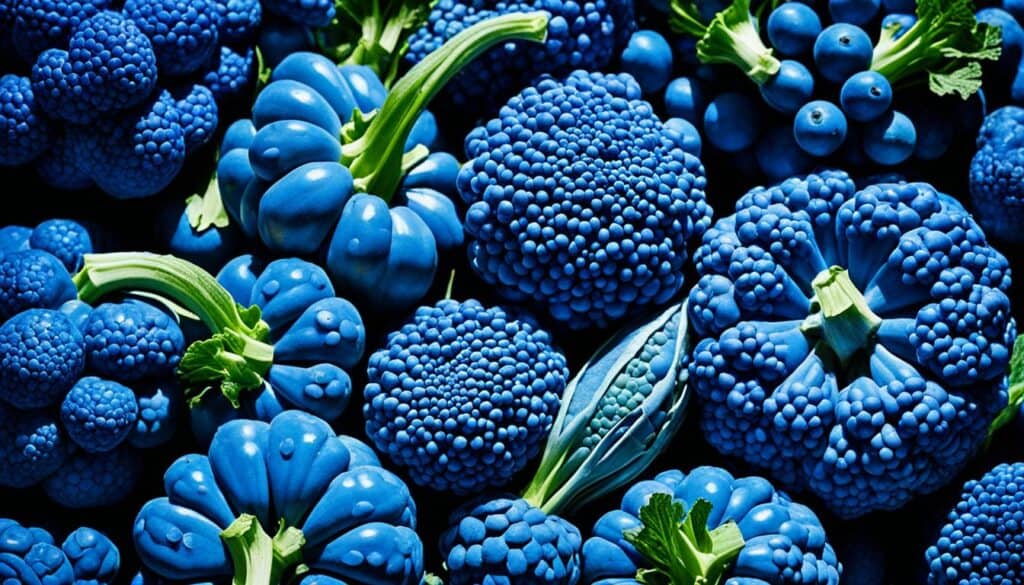

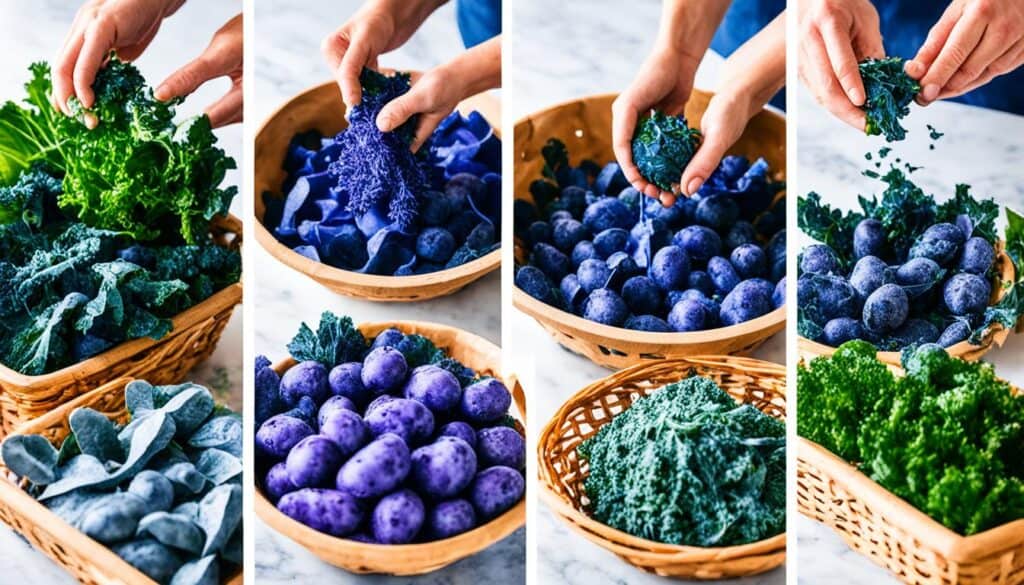
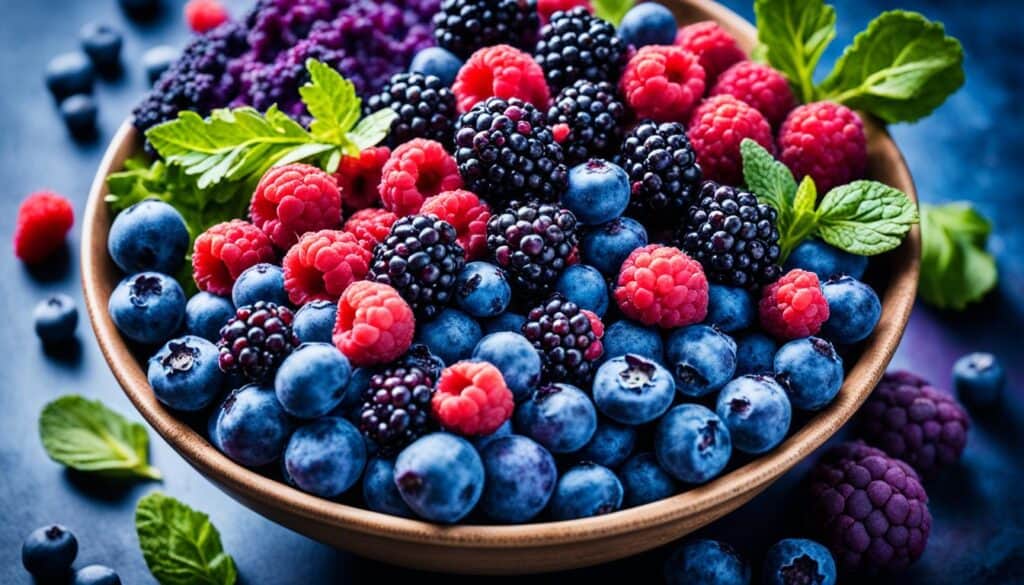
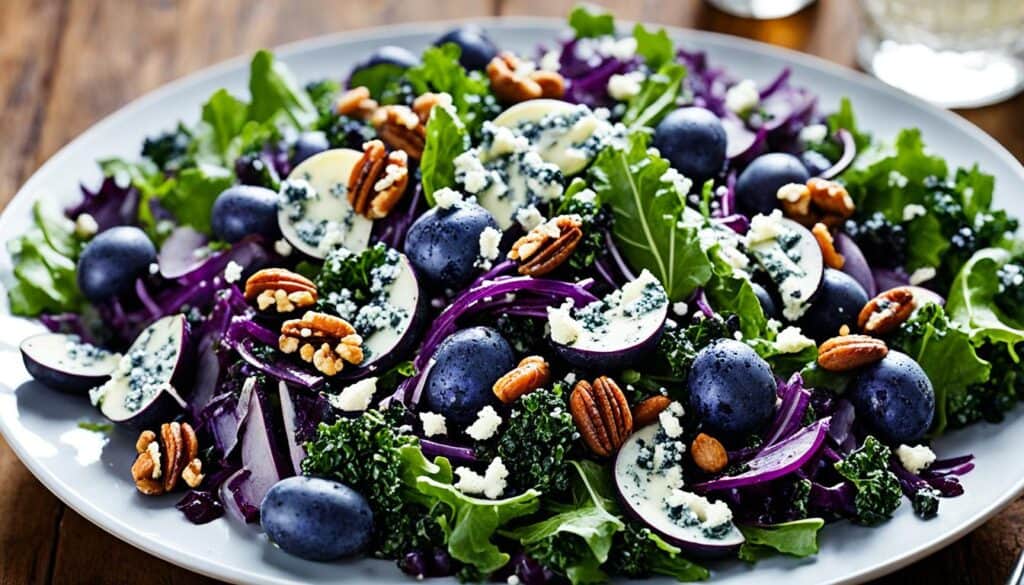



Leave a Reply